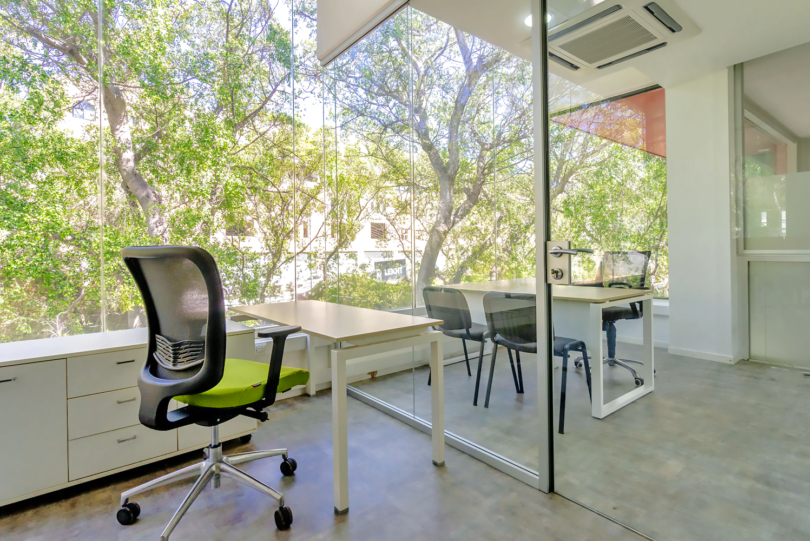What Is Commercial Property?
Commercial property refers to buildings or land used for business purposes and intended to accelerate business. Examples of commercial property include shops, showrooms, offices, clinics and property used for the sale of art or trade, among others. In contrast to residential property, which is essentially a house of some sort.
Commercial Property Classes In Malta
Commercial property is defined by the Planning Authority and must have a permit.
There are many commercial property classes or categories, each having a unique permit with distinct operating parameters identifying what activity is permitted on a property.
Below, you will find all the Commercial Property Classes as set out by the Malta Planning Authority. In all, there are eight categories of properties, all divided into classes. Each class contains a short description of what activities are permitted on the property.
At Office Market, we have a vast database of different commercial properties available for purchase or rent.
Commercial Property Classes In Malta Explained
CATEGORY A – RESIDENTIAL USES
Class 1 – Dwellings
For use as a residence, whether or not as a sole or main residence.
CATEGORY B – SOCIAL USES
Class 2A – Residential Institutions
Use for either of the following:
(a) residential accommodation and care to people in need of care other than a use within Class 1 (dwellings);
(b) hospital or nursing home;
(c) medical clinic;
(d) clinic for professionals complementary to medicine
Class 2B – Non-Residential Institutions
(a) display of works of art other than for sale or hire;
(b) museum;
(c) a public library or public reading room;
(d) a public hall or exhibition hall.
Class 2C – Education
CATEGORY C – TOURISM AND LEISURE USES
Class 3A – Guest Houses, Palazzino, Boutique Tourism Accommodations, and Hostels
Use for either of the following:
(a) guest house;
(b) palazzino;
(c) boutique tourism accommodation;
(d) hostel, where no significant element of care is provided, but excluding premises licensed for the sale of alcoholic liquor to persons other than residents.
Class 3B – Hotels: Use for hotels
Class 3C – Assembly and Leisure
Use for any of the following:
(a) cinema;
(b) concert hall or theater;
(c) swimming bath or pool, skating rink, gymnasium, health club, sauna, sports hall, or other indoor or outdoor land-based sports or recreations not involving motorised vehicles or firearms.
Class 3D – Marine Leisure
Use for any of the following:
(a) mooring boats and/or as a marina;
(b) diving, sailing, or windsurfing school or other marine-based sport or recreation.
CATEGORY D – COMMERCIAL USES (Commercial Property)
Class 4A – Financial, Professional, and Other Offices
Use for any of the following:
(a) financial services;
(b) professional services (including doctors, lawyers, and dentists);
(c) any other offices of a comparable nature.
Class 4B – Retail
Use for any of the following:
(a) retail outlets;
(b) display for sale of goods excluding motor vehicles.
Class 4C – Food and Drink Establishments Where No Cooking Is Allowed
CATEGORY E – INDUSTRIAL USES
Class 5A – Light Industry
Use for any of the following:
(a) research, testing, and development of products or processes;
(b) craft business;
(c) any other light industry not falling under Class 5C, provided that, if any such use is carried out in a residential area, in the opinion of the Authority, it can be carried out without detriment to the amenity of that area by reason of noise, vibrations, smell, fumes, smoke, soot, ash, dust, grit, or visual impact; it does not generate disproportionate vehicular traffic or parking; and it does not result in a significant increase in the number of employees previously engaged in the former use.
Class 5B – General Industry
Use for the carrying on of an industrial process not contemplated by Class 5A or Class 5C.
Class 5C – Specialised Industry
CATEGORY F: STORAGE AND BOATHOUSE USES
Class 6A: Storage and Distribution
Use for storage (other than the storage, on land or on water, of boats) or as a distribution center.
Class 6B: Boatyards
Use for any of the following:
(a) storing boats (other than in a marina);
(b) boat building;
(c) boat repair and servicing
CATEGORY G: – AGRICULTURE USES
Class 7: Agriculture
The carrying on of agriculture, which involves the intensive raising of crops or animals.
CATEGORY H: AQUACULTURE USES
Class 8: Aquaculture
Use for the hatching or fattening of fish.





